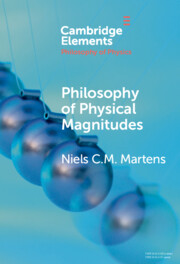40 results
Chapter 8 - Hegel’s Mechanics as a System of Steps from Space and Time to Celestial Motion
- from Part II - Cosmology, Mechanics, and Physics
-
-
- Book:
- Hegel's <i>Philosophy of Nature</i>
- Published online:
- 19 December 2024
- Print publication:
- 12 December 2024, pp 158-175
-
- Chapter
- Export citation
Chapter 5 - Liturgical Aestheticism
-
- Book:
- Liturgy, Ritual, and Secularization in Nineteenth-Century British Literature
- Published online:
- 14 November 2024
- Print publication:
- 21 November 2024, pp 127-147
-
- Chapter
- Export citation
Epilogue
-
- Book:
- Liturgy, Ritual, and Secularization in Nineteenth-Century British Literature
- Published online:
- 14 November 2024
- Print publication:
- 21 November 2024, pp 165-170
-
- Chapter
- Export citation
Chapter 3 - Invoking the Name of Mary
-
- Book:
- Verbal Medicines
- Published online:
- 29 November 2024
- Print publication:
- 07 November 2024, pp 111-150
-
- Chapter
- Export citation
1 - Preliminary Notions
-
- Book:
- Introduction to Elementary Particle Physics
- Published online:
- 08 November 2024
- Print publication:
- 27 June 2024, pp 1-69
-
- Chapter
-
- You have access
- Open access
- HTML
- Export citation
Chapter 5 - Civil Rights Activist and Vietnam War Resister
- from Part I - Bernstein’s World
-
-
- Book:
- Leonard Bernstein in Context
- Published online:
- 06 April 2024
- Print publication:
- 28 March 2024, pp 34-40
-
- Chapter
- Export citation
Chapter 28 - Stephen Schwartz
- from Part V - Connections
-
-
- Book:
- Leonard Bernstein in Context
- Published online:
- 06 April 2024
- Print publication:
- 28 March 2024, pp 236-242
-
- Chapter
- Export citation
Chapter 11 - The Crisis of Faith
- from Part III - Composition, Creation, and Reception
-
-
- Book:
- Leonard Bernstein in Context
- Published online:
- 06 April 2024
- Print publication:
- 28 March 2024, pp 87-97
-
- Chapter
- Export citation
2 - Contrasting Outcomes in the Swiss Confederation
-
-
- Book:
- Reformations Compared
- Published online:
- 14 March 2024
- Print publication:
- 21 March 2024, pp 42-60
-
- Chapter
- Export citation
7 - Floating Substructures
-
- Book:
- Offshore Wind Energy
- Published online:
- 07 March 2024
- Print publication:
- 14 March 2024, pp 213-290
-
- Chapter
- Export citation

Philosophy of Physical Magnitudes
-
- Published online:
- 26 February 2024
- Print publication:
- 04 April 2024
-
- Element
- Export citation
Chapter 5 - Orders for the Stational Mass in Frankish Cities and Monasteries
- from Part II - The Arrangement of Rites
-
- Book:
- Roman Liturgy and Frankish Creativity
- Published online:
- 04 January 2024
- Print publication:
- 18 January 2024, pp 103-139
-
- Chapter
- Export citation
9 - Choral Music
- from Part II - Profiles of the Music
-
-
- Book:
- The Cambridge Companion to Amy Beach
- Published online:
- 19 October 2023
- Print publication:
- 02 November 2023, pp 180-200
-
- Chapter
- Export citation
10 - Romantic Relationships and Traditional Media
-
-
- Book:
- The Sociocultural Context of Romantic Relationships
- Published online:
- 19 October 2023
- Print publication:
- 02 November 2023, pp 168-200
-
- Chapter
- Export citation
11 - Electroweak Symmetry Breaking
-
- Book:
- Fundamentals of Particle Physics
- Published online:
- 31 August 2023
- Print publication:
- 14 September 2023, pp 394-431
-
- Chapter
- Export citation
Chapter 3 - Exploring measurement
-
- Book:
- Primary Mathematics
- Published online:
- 01 September 2023
- Print publication:
- 07 September 2023, pp 41-68
-
- Chapter
- Export citation
2 - Single-Phase Flow Equations and Regimes
-
- Book:
- Fluid Dynamics of Particles, Drops, and Bubbles
- Published online:
- 28 July 2023
- Print publication:
- 17 August 2023, pp 35-83
-
- Chapter
- Export citation
4 - How to Bend Spacetime
-
- Book:
- The Irresistible Attraction of Gravity
- Published online:
- 02 March 2023
- Print publication:
- 02 March 2023, pp 49-64
-
- Chapter
- Export citation
7 - Dynamics
-
- Book:
- A Student's Guide to Special Relativity
- Published online:
- 26 January 2022
- Print publication:
- 03 February 2022, pp 125-144
-
- Chapter
- Export citation
12 - The Dominicans and Their Identity in Medieval Britain and Ireland
- from Part III
-
-
- Book:
- Music and Liturgy in Medieval Britain and Ireland
- Published online:
- 23 December 2021
- Print publication:
- 06 January 2022, pp 269-291
-
- Chapter
- Export citation

